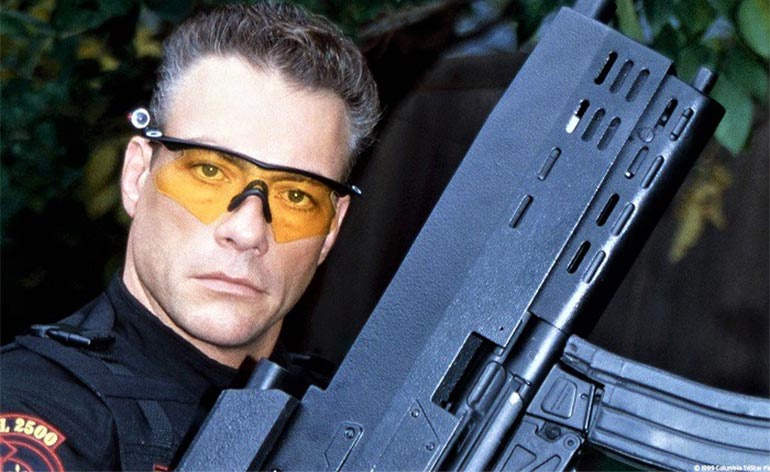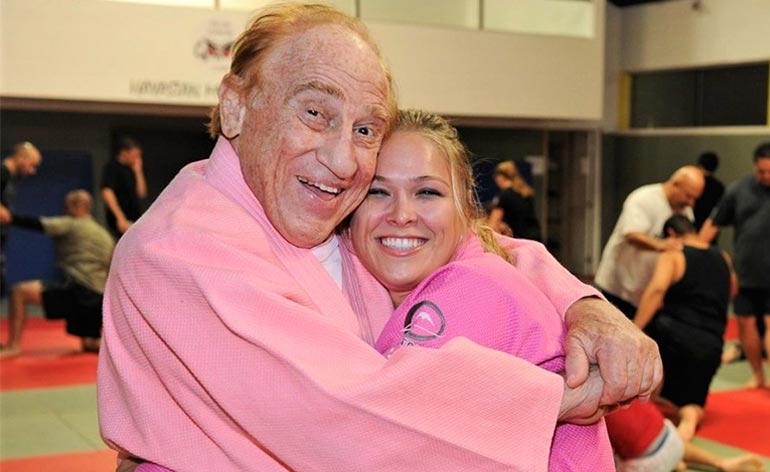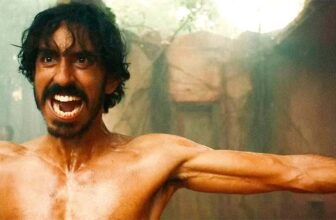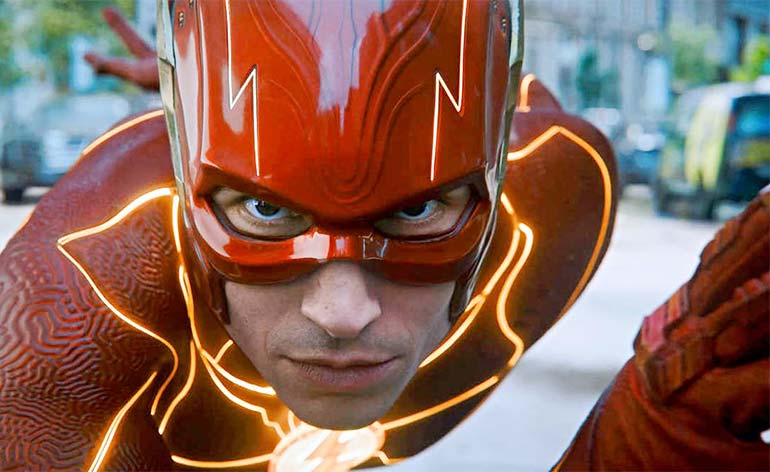
For most people, holding the title of ‘Rhodes scholar’ is ample accomplishment to have under your belt, but not for Matthew Polly. Like millions of martial artists around the world, he was inspired as a child by the immortal legacy that is Bruce Lee. As an adult, Matthew took a break from his studies at Princeton University for a higher education of a different sort at China’s legendary Shaolin Temple, where he lived and trained for two years. Matthew’s incredible experience became the subject of his first book, “American Shaolin”, in 2007. His life as a martial artist would continue to serve as the basis for his literary career in his next book, “Tapped Out”, chronicling his experiences of entering the world of MMA. For his third book, Matthew comes full circle by authoring the definitive biographical account of Bruce Lee’s life and teachings in the newly released, “Bruce Lee: A Life”.
Today, Matthew sits down with KFK to share his eye-opening story of his life as a student at the Shaolin Temple, along with his subsequent experiences as an MMA fighter, and how he came to write the most comprehensive biography to date on the life of the man who (literally) kickstarted his (and countless others’) journey on the path of the martial artist.
Hi Matthew, wonderful to connect with you, thanks for taking some time out with us. Hope you’re doing well?
Hi Brad, I’m doing terrific, thanks. Happy to speak with Kung Fu Kingdom today!
Terrific. Well, lets kick off with a little history about your beginnings in martial arts: what different arts have you studied or trained in?
Well, like a lot of people, my interest in martial arts first began when I saw “Enter the Dragon” when I was about twelve-years old. I’d never seen a kung fu movie before that, so I became a big Bruce Lee fan, and like a lot of kids, cracked myself on the head a lot spinning the nunchakus around. (Both laugh)
When I started in martial arts, I studied Aikido and Taekwondo, and by the time I started college, I was training with a southern kung fu master. Then I left college for two years and studied at the Shaolin Temple in China, which became the basis for my first book “American Shaolin”. Later on, I got into MMA, and I learned Muay Thai, Jiu-Jitsu, and Sambo, and that became the basis for my second book, “Tapped Out”.
You’ve certainly done your dojo hunting! So, after Bruce Lee, who would you say are your biggest influences in martial arts?
Probably my biggest influence was one of the monks, DeQing, (Shi Xing Hong) who was my teacher and good friend at the Shaolin Temple. Looking back on everything in martial arts, I remember him the most fondly and feel like I learned the most from him.
Shaolin monks certainly have no shortage of wisdom to pass on. On that note, what interesting stories can you share about the two years you spent training at the Shaolin Temple?
Well, it was a lot of what they call in China “eating bitter”. We trained kung fu for five to seven hours per day. Basically, you woke up, did kung fu in the morning, you ate, you took a nap, you did more kung fu in the afternoon, ate dinner, and did more kung fu at night. There’s really no distractions at the Shaolin Temple, so basically, you’re totally immersed in kung fu!

Bruce Lee with James Franciscus on Longstreet set Credit – ABC Getty Images
A virtual 360-degree immersive Shaolin kung fu experience, sign me up! So, what’s a typical day of training like for you today?
Well, obviously not five to seven hours a day now. There’s a local school where I do some Muay Thai and hit the bag these days, and I try to keep up with the Shaolin forms as well. But, when you get older as a martial artist, you’re always kind of thinking “I should be doing more than I am!” (Both laugh)
You would later train to compete in MMA, which is chronicled in your book, “Tapped Out”. What can you share about how your MMA training began?
Well, my background was in striking prior to MMA, so it was a very new experience learning how to grapple and fight on the ground. A lot of it was about mentally transitioning into a new mindset about fighting at a new range with a new skill set, and really just going back and essentially being a white belt again. A big part of it was also learning a new skill set when you’re older and not being able to do quite as many things as when you were younger. There’s also the fact that when you train in MMA, you’re completely focused on the sports aspect of it. It’s all about winning or losing your next fight in the cage, so you have to get into the competition mindset while you’re training and think of your training in a very binary way.
On that note, having experienced a wide breadth of different martial arts, are there any other disciplines you’d be interested in studying?
I’d probably want to check out Krav Maga. It’s become kind of a fad in New York and on the East Coast, you bump into people all the time who say “Oh yeah, I’ve studied Krav Maga!”, and it reminds me a lot of when people would really boastfully say, “Yeah, I do Ninjutsu!”
We’ve heard this a fair few times too. Tell us, what are five of Matthew Polly’s definitive martial art film favourites?
“Enter the Dragon” of course is that one that changed my life, so that would be number one. I’m also really fond of Jean-Claude Van Damme‘s “Lionheart”, it has a really nice story and I think that was when he was also at the peak of his abilities. There’s also “Drunken Master II” and “Once Upon A Time in China”, and I also like a lot of Steven Seagal’s earlier films like “Hard to Kill”, because no one had really done what I would call “Brutal Aikido” on film before that.

Bruce Lee v Chuck Norris in Way of the Dragon!
Nice selection! Speaking of brutality, what would you describe as the worst injury you’ve experienced?
Well, its not an injury, per se, but I actually got dysentery at the Shaolin Temple, and there wasn’t a lot of medical care in that part of China at the time. So, if they hadn’t gotten me to a hospital in one of the larger cities, I probably would’ve died.
Wo! Sure glad you were able to make it out of that! On the topic of well-being, if you could be a superhero or have a particular superpower, what would it be?
I think I’d want to have omniscience! A lot of superheroes have a lot of strength and such, but they can’t predict what’s going to happen when the time comes. If you knew everything, I think you could work your way through a lot of tough things in life.
I think that’s the first time we’ve had that answer, it’s something to ponder…To tie-in with that, as someone who’s written several martial art-themed books, what does it take to write a really compelling book on martial arts training, in your opinion?
I think an important thing in writing any book or story on martial arts is capturing the emotions, and the interpersonal actions around it. The kicking and punching is already there to draw people into it, so I think the emotional aspect of it is something you should pay a lot of attention to.
Having a relatable narrative. Now, what can you share about how your newest book, “Bruce Lee: A Life” first came about?
Well, after my first two books, I was looking for a book I could write that didn’t involve me getting punched in the face. (Both laugh) And, a friend of mine suggested, “You know, Bruce Lee was your childhood hero. You should write a book about him.” I actually thought it was a terrible idea at the time, because I thought there must be dozens of Bruce Lee biographies out there, but I looked into it, and was surprised to find that there was only one Bruce Lee biography that was still in print. It was from twenty-five years ago and wasn’t even that well researched. When I saw that, I was actually kind of offended on Bruce’s behalf, and I felt like he had given so much to me growing up, that I wanted to give something back to him. Writing a comprehensive, authoritative biography on Bruce Lee’s life was a way I could do it.
Talk about good ‘kung fu karma’ coming full circle! So, which individuals who knew Bruce Lee were you able to interview for the book, how was your experience connecting with them?
For the book, I interviewed people like Dan Inosanto and Taky Kimura, and the thing that really struck me about interviewing them was how much they revered Bruce Lee to this day. There was still a very strong disciple’s reverence for their master forty years later, and that really stood out to me.
True sign of respect. Were you able to interview Bruce’s daughter, Shannon Lee and his widow, Linda Lee Cadwell for the book?
Yes, I interviewed both of them. Shannon was very nice, and I also talked to her a lot about her brother, Brandon, because I felt like what happened with the Lee family after Bruce died was an important part of his story, and I wanted to include that in the book. She had a lot of fond memories of Brandon being a rebel and being very charismatic. When I interviewed Linda, it really stood out to me how much she still loved Bruce. It’d been four decades since he’d passed away (and she had been remarried) but I was really struck by how much love and admiration she still had for Bruce Lee so many years later.
So, what would you say were some of the more intriguing experiences you had in researching Bruce’s life for the book, perhaps a few surprises, little known details or major insights you gained?
I think the biggest kind of overarching insight was that Bruce Lee started his life in movies when he was two-months old. He was acting before he could crawl! I had previously thought of Bruce Lee as a kung fu master who got into movies accidentally, kind of like Chuck Norris, but what’s interesting about Bruce’s life was that he’d already been in twenty movies by the time he was eighteen, and none of them were kung fu movies. It wasn’t until much later in life that he combined his two great passions to become a kung fu movie star.
Bruce was prepping to be a performer since the beginning…What were some other memorable highlights for you during researching and writing the book?
I got to look at Bruce’s personal diary, and I really got to see how detail-oriented he was and how he kept a log of everything going on in his life every single day. For example, when Shannon was born, he wrote down her height and weight and the time of her birth. He would also put down in detail every time he had an accident, which wasn’t very often, but I found it interesting because all his friends would say, “Bruce was an amazing martial artist, but a terrible driver!”. So I was expecting a huge list of car accidents in his diary, but he only listed two minor fender bender big accidents in his personal writings.
Superb insights! What would you say is your personal favourite story of Bruce’s life that you’ve included in the book?
Well, there’s so many of them, but one of the stories that I think really captures who Bruce Lee was the most was that he wanted to make a movie called “The Silent Flute”. At the time, “The Green Hornet” had just been cancelled, and he wasn’t getting many parts, so he went to Steve McQueen, who was one of his students, and said, “Steve, we’ve got to make this movie together”. And Steve looked at him and said, “Bruce, I’m the biggest box office star in the world, right now. I can’t carry anyone on my coattails and make them a star”. Bruce later said to screenwriter Stirling Silliphant, “I’m going to be a bigger star than Steve McQueen”, and Stirling said, “Bruce, you’re a Chinese man in a white man’s world. You’re never going to be bigger than Steve McQueen”. Years later, Stirling commented, “And dammit if he didn’t prove us all wrong!”
He most certainly did. With the book being published forty-five years after Bruce’s passing, do you think his life story will continue to be historically significant for future generations?
Well, what I’ve found fascinating is how much Bruce’s life story continues to resonate with people. Everyone who’s into martial arts knows Bruce Lee, but even looking beyond that, he’s one of the three or four most famous faces on Earth. You mention Bruce Lee or show a picture of him anywhere in the world, and people know exactly who you’re talking about. I think some of his personal philosophy of: adopting what is useful, rejecting what is useless, and adding what is specifically your own, resonates through time with people who want to challenge traditions and create their own path. I think that continues to speak to people today.
That motto is definitely alive and kicking today! Moving ahead now, what other projects do you have in the works following the release of “Bruce Lee: A Life”? Would you be interested in writing any books outside the topic of martial arts?
I think I’d really want to do another celebrity biography. I quite enjoyed writing about Bruce Lee’s life, and examining it from all sides. I’ve thought about Clint Eastwood as a topic for a biography. The interesting thing about Bruce is that he wanted to be a bigger star than Steve McQueen, but he actually modelled his career after Clint Eastwood, and I think if he hadn’t passed away when he did, he would’ve had a career that was very similar. I think he would’ve gone on to become a director and producer and done a lot more behind the camera. A lot of people have said that writing and directing “Way of the Dragon” was the most satisfying time of his life, professionally. So, a biography on Clint Eastwood is one concept for my next book that I’ve had in mind.
Do keep us in the loop. Well as we sadly prep to wrap Matthew, what kung fu or warrior wisdom quote would you like to give Kung Fu Kingdom readers and your fans and followers around the world right now?
I really love the saying “Train Hard, Fight Easy”. I think that applies to all aspects of life, including book writing. If you work really hard on the research, the writing part becomes much easier.
Nicely summed-up. Thank you so much for the privilege of this interview, it’s been riveting! We look forward to all of your upcoming books and future literary works and projects.
Thanks Brad, happy to share the backstory of writing the book on Bruce Lee’s life with KFK!
“Bruce Lee: A Life” is now available from book stores and online retailers. Stay tuned for KFK’s upcoming competition for your chance to win a copy of this 600+ page heavyweight signed by Matthew himself! Have you read his previous books, “American Shaolin” and “Tapped Out”? What other legendary martial artists would you like to see detailed, authoritative biographies on? Let us know in the comments below; Like, share and join in the conversation on Facebook and follow us on Twitter and Instagram (Get more FU-spiration from our other exclusive interviews too!)








